A new initiative could transform the way trusts manage their radiology reports and deliver substantial efficiency benefits. Charles House and Rhiannon Williams explain.
Get involved
If you have a case study of partnership working you would like to see published in Resource Centre email hsjresourcecentre@emap.com with the subject line “partnerships”.
Alternatively, use the comment box to post your top tips and suggestions for making partnerships a success.
If there is a topic you would like to see covered in Resource Centre email us with the subject line “key topic.”
It’s 2am, a time when most radiologists are tucked up in bed. As they sleep, urgent diagnostic images ping their way through a secure virtual private network from University College Hospital, in the heart of London, to Australia, where it’s lunchtime. Here they are picked up by UK-qualified consultant radiologists, reported and sent back across to London to the referring doctor.
This is an example of the NHS at its innovative best, working in a commercial partnership to improve efficiency and productivity along with the quality of care for patients. Radiology Reporting Online is a joint venture between University College London Hospitals Foundation Trust and Imaging Partners Online, a private company based in Sydney. It provides a rapid, round-the-clock reporting system that is already paying dividends.
The impact of RRO has contributed to transformational change in the UCLH imaging department. Outpatient CT scans that were taking an average of 26 days from exam to report in January 2011, are now taking around 2.5 days. The waiting time for reporting routine GP scans has been reduced from up to two weeks to 24 hours.
The joint venture has created an imaging reporting service that is now available to hospitals across the UK and could eventually include hospitals in Europe and the Middle East. RRO provides daytime, after hours, urgent and locum reporting of diagnostic images. It opens up the possibility to NHS trusts of accessing radiology expertise in specialties where they have none, for example neuroradiology, uroradiology or paediatrics.
Foreign affairs
There were many reasons why UCLH decided 24-hour radiology reporting was an issue worth tackling. As ever, these included the ongoing need to improve quality, efficiency and productivity.
Directly linked to this was the development of junior doctors. Radiology trainees at UCLH were concerned about the impact the European working time directive was having on their training. They were working overnight, at a cost to the NHS, to report only a few urgent scans. To comply with the directive they had to take the following day off. Audits also identified they were not providing the high standard of radiology reports the trust expected.
Crucially the radiology landscape was changing beyond recognition. In common with most radiology departments across England, UCLH saw an explosion in demand for imaging in the first decade of the new millennium. Activity in CT rose from around 7,000 in 2001-02 to 21,000 in 2010-11 (see table).
Attendances per financial year of all CT activity in the imaging department at UCLH
| Year | Attendances |
|---|---|
| 2001-02 | 7,433 |
| 2002-03 | 8,464 |
| 2003-04 | 9,550 |
| 2004-05 | 9,734 |
| 2005-06 | 10,384 |
| 2006-07 | 13,679 |
| 2007-08 | 15,394 |
| 2008-09 | 17,612 |
| 2009-10 | 19,785 |
| 2010-11 | 21,583 |
The trust expects further expansion in existing fields as well as with the introduction of England’s first positron emission tomography/magnetic resonance scanner at the University College Hospital Macmillan Cancer Centre, which will open in April. The profile of how imaging departments should be managing this huge increase in demand was highlighted in a recent Department of Health report from the national imaging clinical advisory group.
The report, Implementing Seven Day Working in Imaging Departments: good practice guidance, was commissioned as a result of the growing enthusiasm for seven day working in the NHS, to make best use of resources and to provide a more customer focused service. The report states that improving access to diagnostic imaging can improve patient safety and experience, as well as reducing costs and length of stay.
The first response to an increase in demand is to do more scans, with extended days, seven day scanning and central bookings to increase efficient use of machines – sometimes without due care and attention to reporting capacity.
At the same time as this mushrooming of activity, radiology was in the middle of an IT revolution – as yet unfinished. For departments familiar with piles of film packets and, later, pigeonholes full of request forms to drive their reporting services, the transformation to filmless services and then to paperless requests presented a risk of disorganisation, neglected scans and inefficient reporting, because of the extra pressures placed on reporting radiologists.
As scanning activity outstripped reporting resources, turnaround time for reports increased. With it came the risk of unreported studies, inevitable delays in patient pathways, and inefficient working practices in multidisciplinary teams. UCLH needed to minimise the risk of reporting delays, keep junior doctors happy and tick all of the boxes associated with its quality, efficiency and productivity programme.
The trust entered into discussion with Imaging Partners Online about providing an out of hours service for urgent diagnostic scans. UCLH staff were given a single number to contact a consultant radiologist and received a consultant-led, fully audited service for diagnostic scanning out of hours. After 12 successful months, the service was expanded to include daytime imaging work. Scans continued to be sent to Australia overnight but, during the day, reports were provided by UCLH radiologists from a newly built, state of the art facility at the trust’s headquarters.
The partnership, along with other innovations, has helped transform working practice. The installation of reporting software (Soliton) has enabled all activity to be assigned to easily accessed worklists that are simple to administrate. Also, workstations from the busy University College Hospital have been moved to the purpose-built suite at the trust headquarters, allowing radiologists to report without distraction.
- Free for subscribers: view the powerpoint slides on the workflow of Radiology Reporting Online attached right
Working hours pressure
Imaging Partners Online began the reporting service for UCLH in 2009, when the imaging department was finding it difficult to balance the European working time directive requirements for the junior doctors with maintaining the high standards of its specialist training programme. During this first phase, the reporting was restricted to out of hours, from 7pm to 8am.
RRO radiologists only report scans during their “waking hours”, which means scans are reported in the UK until 11pm, when UK-qualified consultant radiologists in Sydney and Melbourne take over until 8am, giving a 24/7 service, 365 days a year. The benefit for UCLH is that it allows junior doctors to have much richer training during the day.
At this time, it became clear that the NHS and private sector working in partnership could also make a significant difference to the productivity and quality of reporting for routine work. This was when the idea of the joint venture came to the fore.
UCLH is known for its innovation and relationships with the private sector, but the creation of a radiology joint venture with IPO, where up to 70 per cent of University College Hospital’s reporting would be performed, was ambitious and brave – particularly at a time when most NHS trusts were becoming more risk averse.
However, the benefits were obvious: the imaging department would be able to harness some of the skills and experience of the private sector and deliver a radical change in its reporting service. As a joint venture partner, UCLH can reinvest any profits from RRO, which will further benefit patients and the development of imaging services.
Much of this ambition has been achieved, but there were a number of teething problems along the way. It is almost impossible to achieve the kind of turnaround that was aimed for without having to face a variety of challenging situations, as is often the case with big-change projects. There will always be a certain amount of resistance, so there have to be plenty of good reasons for doing this. Contributing to meeting the Nicholson challenge – finding £20bn in productivity savings – is one of them.
RRO’s workflow and system architecture has quality improvement at its core, which encourages each radiologist to focus, undisturbed on reporting. Images (x-ray, CT and MRI) are transferred over a secure network.
The financial gain from greater productivity is significant – for example a reporting centre delivering 15 reports an hour compared with 10 could deliver a productivity saving of around 30 per cent, either achieved by reporting more examinations or by reducing the cost base.
The gains from overnight reporting are also substantial as the cost of keeping junior doctors in the hospital to report overnight can be up to three times more expensive than using RRO, where the reporting is done by consultant radiologists.
UCLH took the decision to make timely reporting of CT, MRI and plain film an absolute requirement. The relationship with RRO has been crucial to the transformation of its radiology reporting service. The flexible reporting capacity has allowed the trust to improve its productivity and efficiency in an increasingly challenging environment and ensure appropriate turnaround times for scans, which can only improve the patient experience.
The efficiencies have enabled UCLH to dispense with locums and stop outsourcing some of its MRI reporting, which it had previously been obliged to do. Having RRO handle overnight reporting has proved a cost efficient and clinically appropriate means of delivering out of hours reports by UK accredited consultant radiologists, while optimising consultants’ daytime productivity and enhancing the quality of supervised training opportunities for trainees.
Adopting this model, which has proved to be so effective, might allow other trusts to achieve similar improvements in the quality and efficiency of their reporting.
Robert Naylor on innovation
Innovation, enterprise and collaboration are essential if the NHS is going to meet the Nicholson challenge.
Delivering efficiency often fits hand in glove with the quality improvement that patients expect – working with private providers can act as a real catalyst. University College London Hospitals has an impressive history of collaboration with private partners on quality initiatives. In 2000 we signed up to what was then the largest private finance initiative in the NHS, we teamed up with HCA to deliver private care for cancer patients and have seen dramatic improvements in response times and cost efficiency in pathology with The Doctors Laboratory.
Our latest joint venture, Radiology Reporting Online, demonstrates the potential to deliver more rapid reports, reduce costs and generate international revenues in the post-Health Bill environment. It’s all about bringing the systems, processes and commercial expertise of the private sector alongside the clinical excellence and leadership of a major foundation trust.
There is a place for public and private sector competition, but perhaps even more scope for constructive collaboration with mutual benefit. Radiology is just one area where joint ventures like RRO can be productive, but there are even greater opportunities for whole hospital collaborations in view of the likely failures to attain foundation trust status given the financial challenges ahead. Now is the time for enterprise and innovation.
Find out more
Downloads
Key points for quality reporting
PowerPointRadiology exam waiting times
Image



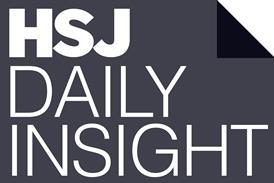
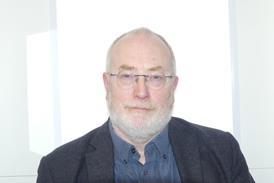

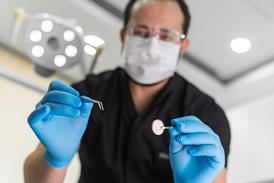
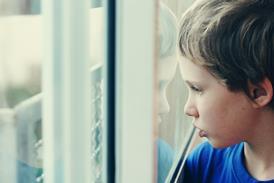
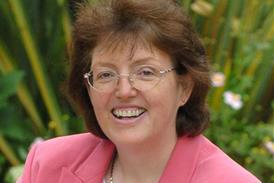















No comments yet